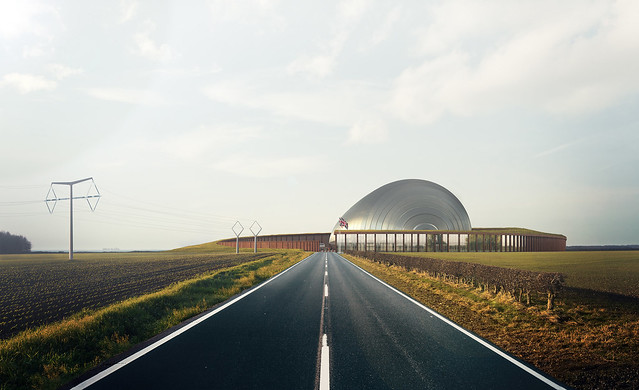 The UK’s Nuclear Innovation Research and Advisory Board (NIRAB) said in its latest Annual Report to the Department for Business, Energy and Industrial Strategy (BEIS) that nuclear energy should provide at least half of the low-carbon electricity not supplied by renewables.
The UK’s Nuclear Innovation Research and Advisory Board (NIRAB) said in its latest Annual Report to the Department for Business, Energy and Industrial Strategy (BEIS) that nuclear energy should provide at least half of the low-carbon electricity not supplied by renewables.
NIRAB, together with the Nuclear Innovation and Research Office, provides independent, expert advice to the UK government on the research and innovation needed for nuclear energy to play a significant role in future low-carbon and secure energy mix.
NIRAB's Annual Report 2020 – Achieving Net Zero: The role of Nuclear Energy in Decarbonisation – also called for development of both large and small-scale nuclear power plants to help the UK meet its Net Zero targests.
“Maximising nuclear’s contribution to Net Zero will not only require the major deployment of further large scale nuclear, capitalising on repeated designs, but also stations that are smaller than those gigawatt-scale units currently preparing for construction and advanced reactors which can contribute to meeting the needs for heat and hydrogen as well as electricity,” it said.
NIRAB said: “It would be prudent to plan for nuclear energy to provide at least half of the firm low-carbon electricity not provided by renewables."
NIRAB is also convinced that nuclear power has the potential to contribute to the decarbonisation of other energy vectors.
"Further work is required to quantify how nuclear can best support cogeneration; to use a high-temperature process to generate hydrogen or synthetic fuels, together with the ability to switch over to delivery of mid-merit electricity, when required,” it said.
The report recognised that achieving a net-zero target by 2050 is likely to require "all the available and capable low-carbon technologies to be deployed at scale and the earliest opportunity." This includes nuclear, renewables and gas combined with Carbon Capture and Storage (CCS).
However, it noted that nuclear power "is the only 24/7 low-carbon technology to have been demonstrated at scale and has provided clean, safe and secure electricity to the grid since 1956."
"Therefore, in terms of energy security, cost to the economy and the ability to meet the net-zero target, planning a future net-zero energy system without significant nuclear energy would be extremely high risk,” it said.
Recommended areas for nuclear development and deployment
NIRAB proposes three streams of nuclear product development and deployment should be progressed:
- large-scale Light Water Reactors (LWRs), which are currently available and suitable for baseload electricity generation
- small modular reactors (SMRs), which are based on the same proven technology and can offer additional flexibility to meet local energy needs
- advanced modular reactors (AMRs), which typically have a higher temperature output, enabling them to contribute to decarbonisation through heat and hydrogen production, as well as generate electricity at competitive costs.
Over 80% of the UK’s nuclear generating capacity will reach or exceed its design life within a decade. “Consequently, there is an urgency to establish and implement a nuclear energy strategy cemented in enduring government policy, with increased rollout of largescale reactors and investment in Small and Advanced Modular Reactors.”
NIRAB also said the UK government should continue to support:
- advanced digital design
- deployment of advanced manufacturing methods and the UK supply chain capability in this area
- development of an improved methodology for developing codes and standards for new manufacturing methods, aligned to SMR programme needs.
NIRAB believes it is time to move forward towards demonstration of both SMR and AMR systems with appropriate underpinning R&D programmes to support the decarbonisation of the UK economy.
NIRAB makes six recommendations:
- Government should, in partnership with industry, deploy a SMR fleet, with the first commercial operating reactor by 2030.
- Government should enable nuclear's contribution to wider energy decarbonisation investing in advanced reactor systems including high temperature gas reactor (HTGR) systems. The recommended budget for public investment in a continued Nuclear Innovation Programme for the five years starting in April 2021 is £400m for R&D and £600m for advanced reactor demonstration.
- Government should enable an AMR demonstrator in 2030 to 2035. An appropriate selection should be completed as soon as possible, against a baseline of HTGRs.
- Publicly funded UK nuclear innovation activities should be shaped by cost-effective deployment of advanced nuclear technology to make a significant contribution to decarbonisation by 2050.
- UK investment in fission should be leveraged effectively through international R&D programmes, that will enable successful commercialisation of technology to accelerate timeframes, making best use of resources, expertise and nuclear infrastructure.
- Government should ensure the best value for money and increased impact of nuclear on net zero by facilitating integration of investment and delivery between the UK fission and fusion programmes.
NIRAB said it firmly believes that addressing these six recommendations presents the best opportunity to deliver nuclear into the UK energy system for all the decarbonisation benefit it provides.
“There is an imperative for industry and government to work together on nuclear technology to secure a vibrant nuclear industry that cost effectively deals with the clean-up of legacy nuclear facilities, sustains current nuclear plant operation, and develops a next generation of low-carbon nuclear power," said NIRAB chair Mike Tynan.
"Industry and Government collaboration must span sector and international boundaries, it must encourage innovation, sharing of learning, and application of innovative technology already deployed in other industries,” he added.
Photo: The 440MWe Rolls-Royce SMR (Credit: Rolls-Royce)






